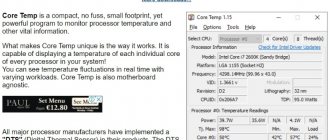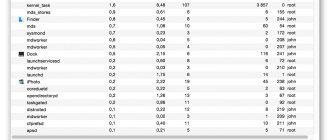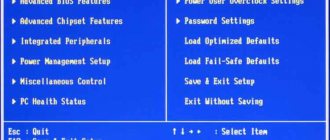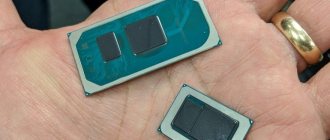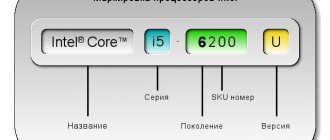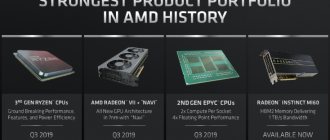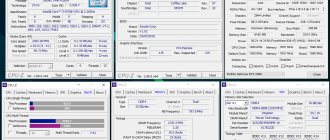When you're looking for a new computer processor to buy, you'll come across technical features such as the processor's base clock speed or boost rate. Have you wondered what this means? While all processors have a base clock speed (operating frequency) that is in the multi-gigahertz range, modern processors also exhibit higher turbo boost speeds. If you look at AMD or Intel processors, they all show their turbo boost clock. That's what Turbo Boost means when it comes to processors.
How to enable turbo mode in Opera
Desktop version
Call the main menu and go to settings. A: Open the Browser tab and scroll down to Opera Turbo. Check the “Enable” checkbox.
For convenience, add the Turbo Button extension. After installing it, a button will appear on the browser taskbar that can be used to turn turbo mode on and off.
Download QR Code
Turbo Button
Developer: Nekomajin
Price: Free
mobile version
In the mobile version of Opera, the option to save traffic remains on the first settings screen.
Turn on turbo and monitor usage statistics. If you want to save more bandwidth, choose low image quality.
Manufacturers call Turbo Boost differently
Both AMD and Intel have technologies that control the base frequency of their processors and turbo boost speeds. For its latest series of computer processors (Ryzen 2000 and Ryzen 3000), AMD calls it Precision Boost 2. You can see a few details about it in the screenshot below.
Starting with the second generation Intel Core i5 and i7, Intel uses Intel Turbo Boost Technology v.2.0, and for the latest Core i7 and i9 processors, Intel Turbo Boost Max Technology v3.0.
How to enable turbo mode in Yandex Browser
Desktop version
Traffic saving mode is activated automatically when the speed drops to 128 kbps. As soon as the speed increases to 512 kbps, the turbo is turned off. You cannot change these values, but you can enable or disable data saving manually.
To control turbo mode in Yandex Browser, open the main menu and go to Settings. Find the "Turbo" section.
You can choose a permanent operation mode or prevent the browser from saving traffic.
mobile version
On a mobile device, turbo mode is also launched through the settings.
If a lot of traffic is spent on video, enable video compression during playback. This will reduce quality but increase download speed. Other browsers do not have this option.
How to enable Intel Turbo Boost?
By default, the technology is automatically enabled in the system and is used as needed when performing resource-intensive tasks. But in Windows OS you can “force” the processor to work in Turbo Boost mode almost constantly. To do this you need to do the following.
Open the Control Panel and go to Power .
Select the High performance and close the page.
In this mode, the processor constantly uses the highest possible frequencies. In the case of the Intel i5-6200U processor, with a nominal frequency of 2.3 GHz, it overclocks and runs stably at 2.7 GHz.
If you have a laptop with a processor that supports Turbo Boost, then it’s easier to go the other way. Click on the battery icon in the lower tray and move the slider to the right, selecting Maximum performance .
However, if you do not need maximum computer performance at all times, then it is better to allow the system to independently manage the processor frequency. Thus, only in rare cases will the frequency reach peak limits.
How to enable turbo mode in Chrome
Desktop version
Chrome on your computer does not have a built-in turbo mode. To add this feature, you need to install the free Data Saver extension.
After adding the extension, an icon will appear on the taskbar. When you click on it, you will be taken to an information window that shows traffic consumption.
Traffic saving mode always works. If you are not happy with how the extension functions, disable it. This can be done through the “Extensions” section in the main Chrome menu.
mobile version
You don't need to install anything on the mobile version of Chrome. The traffic saving function is built into the browser.
Call the main menu and go to “Settings”. In the “Advanced” field, find and enable “Traffic Saving”.
What is the processor clock speed?
First, you must understand what the CPU (Central Processing Unit) clock is. The base frequency is the processor's standard speed or operating frequency. It is measured in gigahertz and tells you how many billions of calculations it can perform in one second.
In the early days of computers, processors only ran at their base clock speeds (frequency), which meant they had a fixed speed rather than being scaled up or down. This also meant that comparing processors to find out which was faster was quite easy. In general, a processor with a higher clock speed was faster than a processor with a lower clock speed. For example, a 3 GHz processor was faster than a 2.5 GHz processor, although other factors such as processor architecture or cache size could tip the balance.
conclusions
Now you know how to enable Turbo Core. Depending on the processor and motherboard, using Turbo Core Technology can provide significant performance gains. And although using this technology is safer than other overclocking methods, you must adhere to a basic rule: make sure the cooling system is efficient enough!
As the frequency increases, the heat dissipation also increases. This can become a problem if you use a weak supplied cooler, low-quality thermal paste, or a powerful processor of previous generations (their heating is usually higher).
You can track the temperature using specialized programs (AIDA64, HWMonitor). Measurements should be taken at maximum load, for 15-20 minutes. Heating should not exceed 70-80° (each processor has its own limit, this figure can usually be found in the specifications).
It is also worth understanding that Turbo Core is only applicable to the central processor. To further increase performance, you may need to overclock other components. It’s up to you to decide whether to enable amd turbo core technology or not.
If you find an error, please select a piece of text and press Ctrl+Enter.
Related posts:
No related photos.
Rate this article:
( 3 ratings, average: 3.67 out of 5)
Tweet Pin It
about the author
te4h_staff
Not only its author, but also other people from the te4h team, administrator (admin), editors or other authors worked on the article. This author may also receive articles whose authors wrote few articles and there was no point in creating separate accounts for them.
AMD Turbo Core technology - what is it?
A technology in which the processor increases the core frequency as the load increases.
Intel processors have a similar function, it’s called Turbo Boost. Fundamental differences from Turbo Boost: the maximum increase (in older models it reaches 500 MHz) in clock frequency can be received by up to three active cores simultaneously, and inactive cores are not turned off, but are switched to a low-power mode with a clock frequency of 800 MHz. PS: today it is possible that the technology has already changed; after all, Ryzen has come out, and this is no longer just a new line of processors.
The function appeared starting with the Phenom II X6 model (Thuban core) and is something like automatic overclocking.
Essentially, the technology allows you to increase performance under heavy loads, but at the same time keep temperature and heat dissipation (TDP) values within acceptable limits.
In the latest processors, the technology is renamed Precision Boost.
For example, such a function is available in the FX 8320 processor (8 cores).
There is also a similar function - AMD PowerNow!, but it is already used in laptops and is needed not to increase the frequency, but to decrease it in order to extend the battery life of the laptop. That is, AMD PowerNow! reduces the frequency if you do not use the laptop, or if it is not heavily loaded.
The option in the ASUS BIOS, by the way, right below it you see another item Turbo CORE Ration, is presumably needed to regulate the efficiency of the function.
Why do processors with turbo boost have advantages?
The main advantage of such a processor is that it speeds up the computer under heavy load. If you are running a video game or a demanding application, your processor automatically increases the boost clock speed and provides maximum performance. This means better performance when it matters.
Additionally, Turbo Boost is a completely automatic process: your processor overclocks itself, without any intervention from you. It just works, so everyone benefits, whether you're a home user with no computer experience or a professional who works with enterprise applications that require a lot of processing power.
Principle of operation
When the Game Accelerator function is enabled, the performance of the computer's RAM increases, which is achieved by optimizing the memory access mechanisms implemented in the motherboard chipset. When the function is disabled, the motherboard chipset uses standard mechanisms for accessing RAM. As can be understood from the name of the function (“Game Accelerator”), motherboard manufacturers address this option, first of all, to those who like to squeeze the maximum possible out of hardware when playing “sophisticated” games.
However, the degree of increase in RAM performance when the Game Accelerator function is enabled is, as a rule, not very noticeable in practice and largely depends on standard timings, that is, the magnitude of time delays in the operation of memory modules - the smaller they are, the greater the positive effect. Also, when enabling the option, you should take into account that the Game Accelerator mode can lead to unstable operation of the computer.
Typically, this function is located in the BIOS section, where functions that affect system performance are collected, for example, in the Performance Options section. The function may have different names on different motherboards. The name Game Accelerator is commonly used on Abit motherboards. On some Abit boards the function may also be called Turbo Mode.
In the Abit version, the option has the following values - Auto, Turbo, Street Racer and F1, which imply the use of various degrees of optimization. Setting maximum values – Street Racer and F1 require the use of memory modules with small timings. In addition, these modes, as indicated by the motherboard manufacturer, significantly load the memory modules, while the Turbo option is suitable for most modules.
On ECS motherboards a similar option is called MEM Turbo Mode, on ASUS motherboards it is called Performance Mode. In the ASUS variant, there are three options - Auto, Standard, Turbo. The Turbo option enables the memory optimization mode, while the Standard option disables it. The Auto option allows the BIOS to determine the type of optimization itself.
